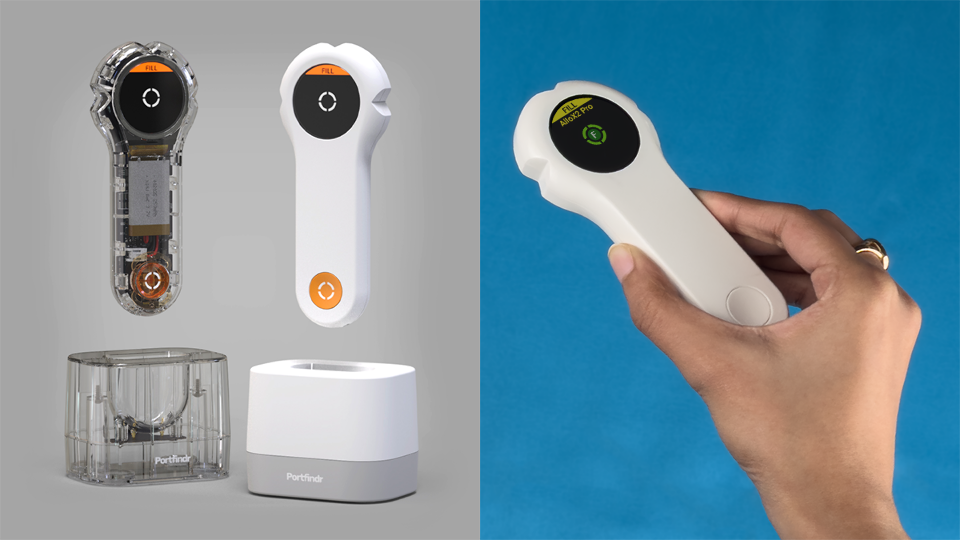
For many breast cancer patients who have undergone mastectomies, breast tissue expanders are an essential part of an effective recovery. Breast tissue expanders contain ports that receive injected saline –, enabling gradual tissue expansion. These ports are under the skin, but because the port includes magnetic material, it can be detected. Traditionally, doctors would use a “dangle magnet”—literally a magnet on a piece of string—to locate the port.
A team of medical doctors from West Virginia University, along with Sientra, a medical aesthetics company, approached Daedalus to develop a device to replace the dangle magnet. This would be a handheld electronic device that would more quickly and precisely locate the center of subcutaneous ports. The Daedalus team explored various design concepts, initially considering a screenless device using LED arrays for guidance. However, the complexity of detecting multiple ports led us to incorporate a screen and software interface. Our team developed deep expertise in magnetometry, particularly focusing on MRI-compatible ports. Through multiple iterations and extensive testing using 3D-printed prototypes, we refined both the physical design—featuring a distinctive round screen and ergonomic shape—and the sensing capabilities. When requirements shifted from a two-magnet to a single-magnet system, we adapted the software and sensing accordingly. To enhance usability, we designed a cordless charging station that eliminated the need for manual plugs and ports, ensuring the device was always ready for use. The Portfinder received FDA clearance and is a significant advancement in post-mastectomy care.